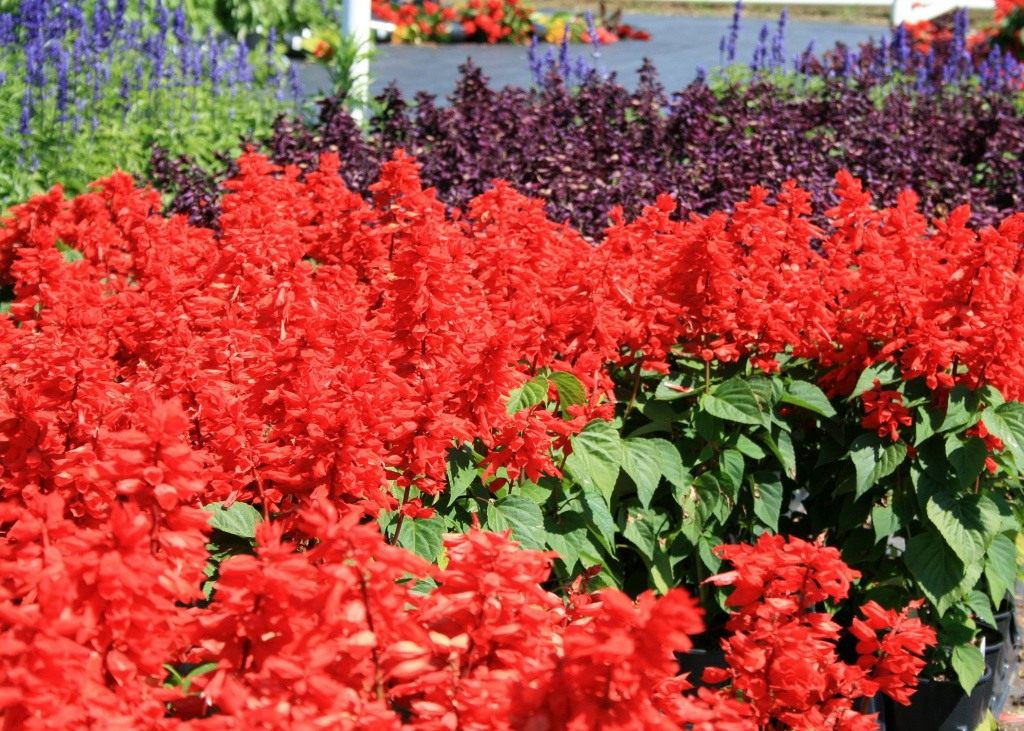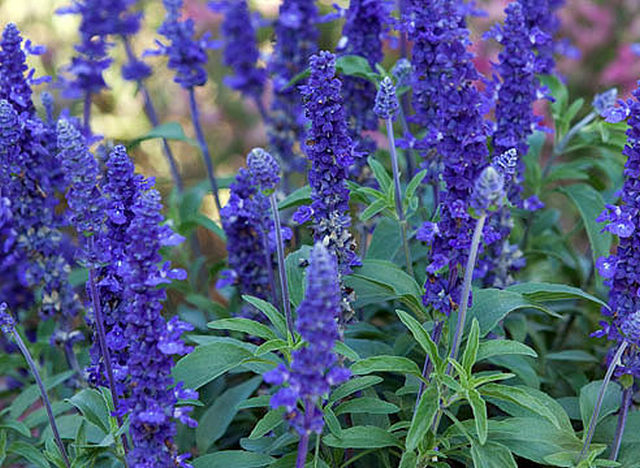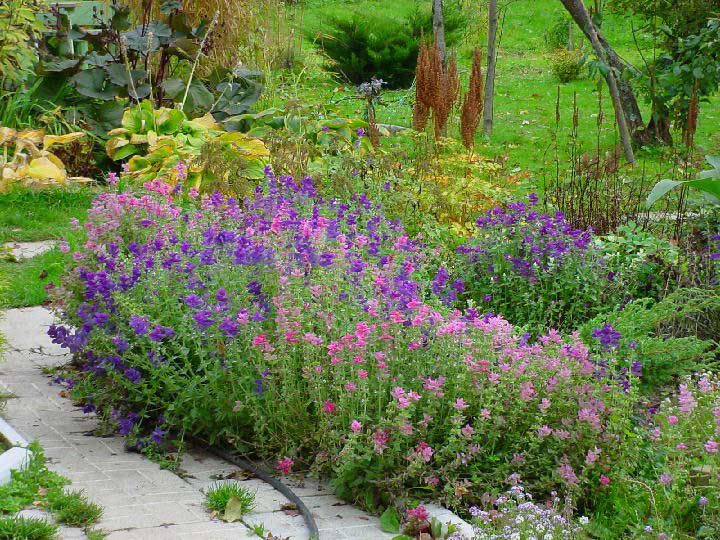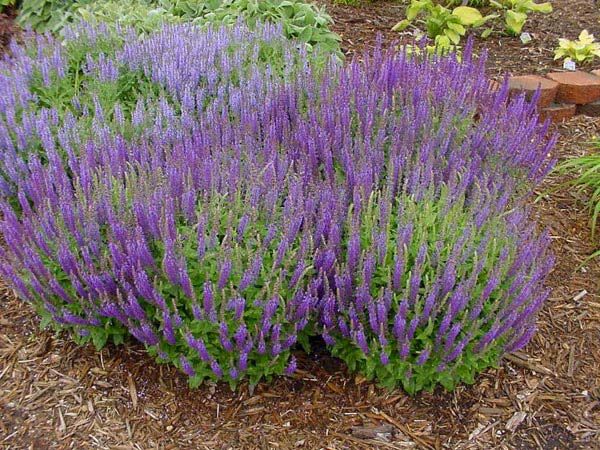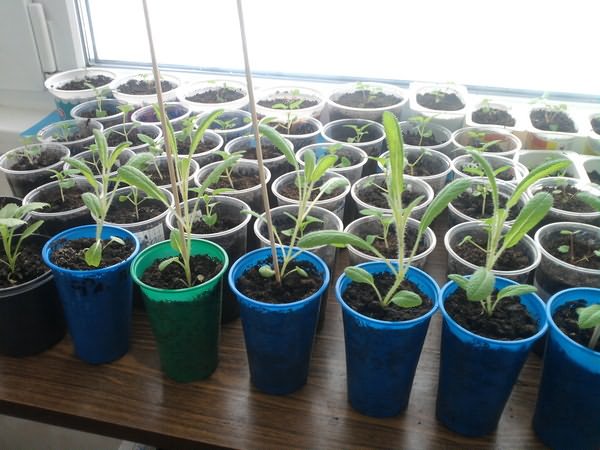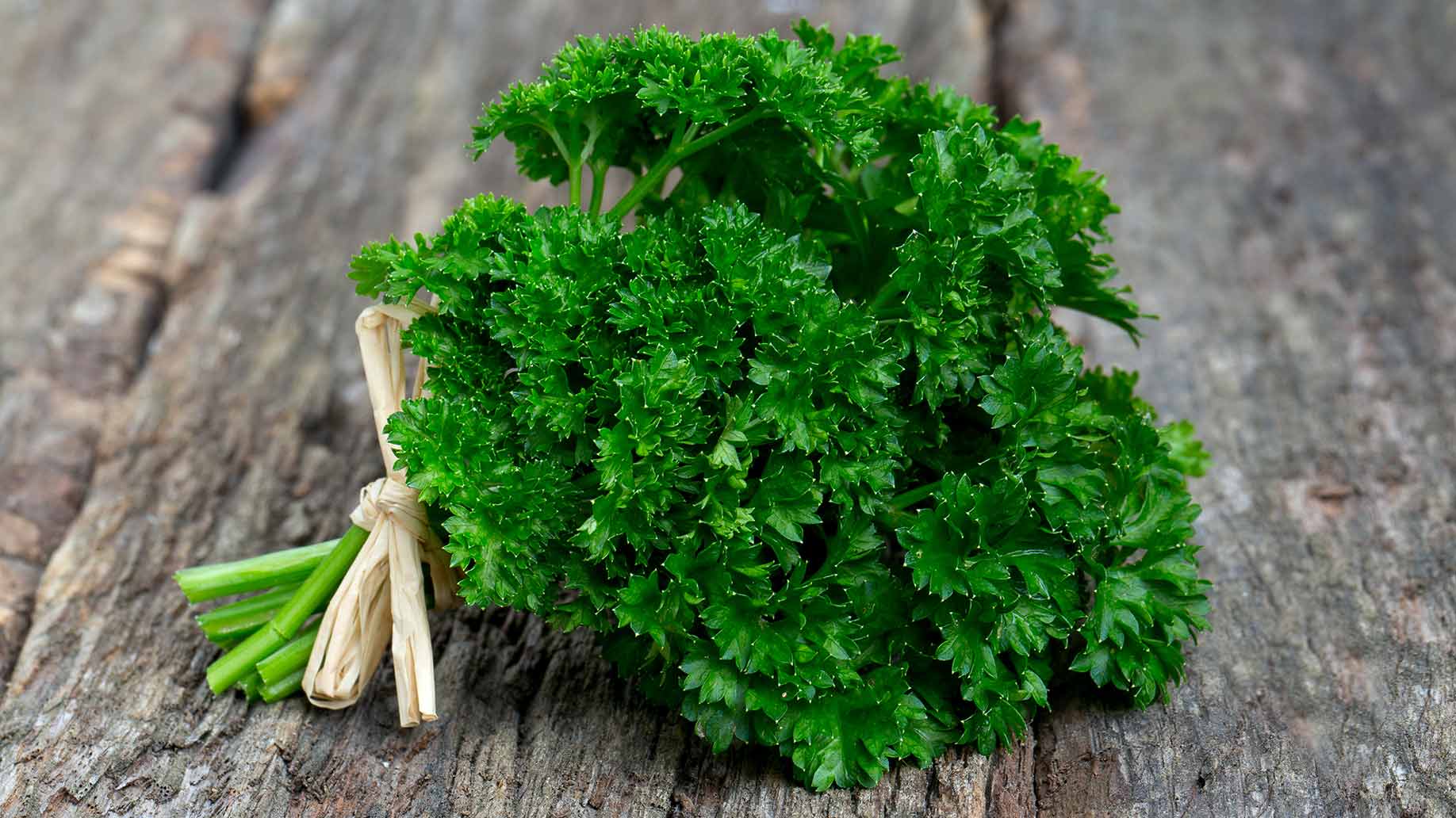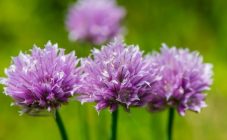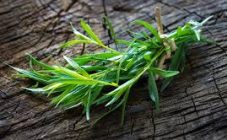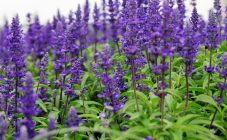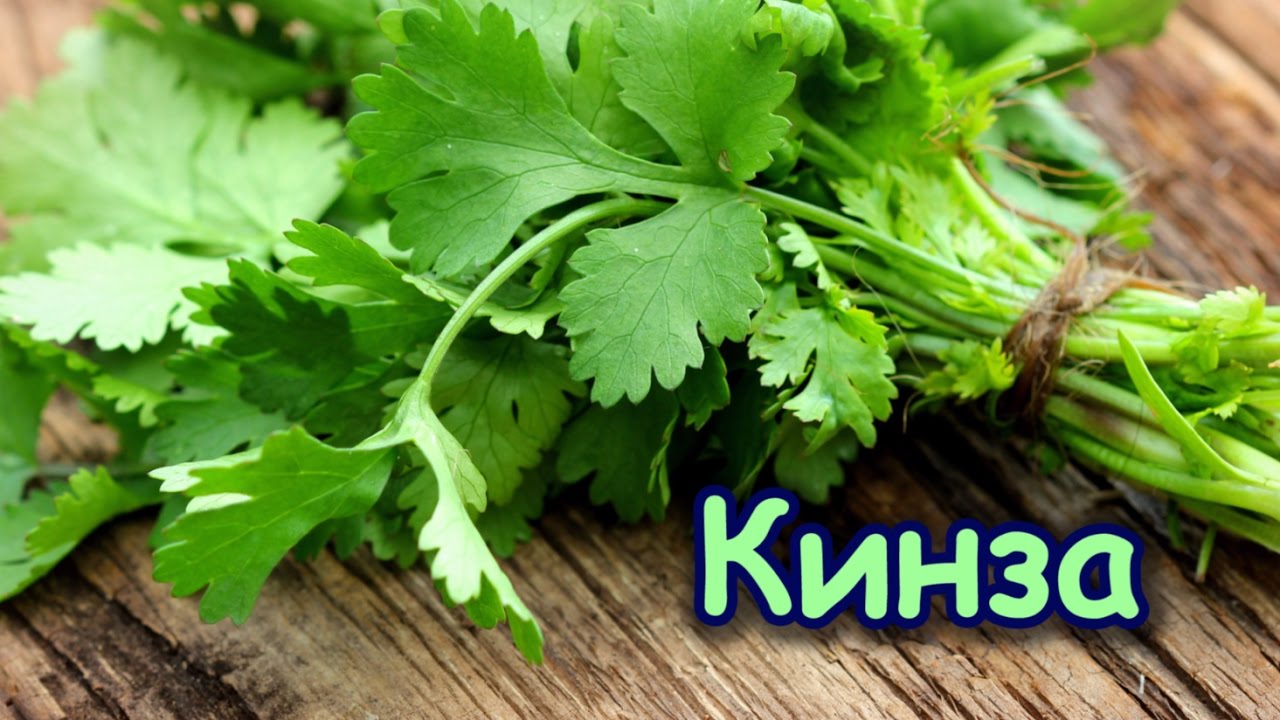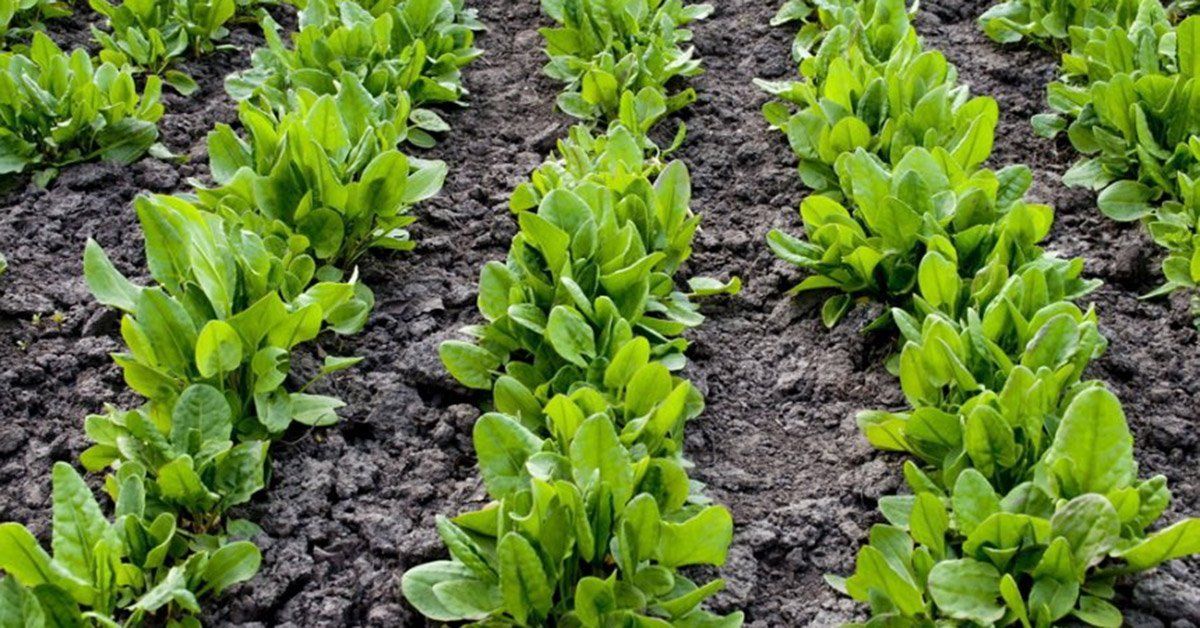Content:
Salvia is also called sage. The plant belongs to the perennial herbaceous and shrubby crops of the Lamiaceae or Labiate family. You can meet them in the tropics and regions with a temperate climate. It does not grow only in Australia. Literally the name of the plant can be translated as “to be healthy”. The fact is that some varieties are used for medicinal purposes.
To prevent confusion: the medicinal flower and spice have the name sage, but the decorative representatives of this species are salvia. Having figured out what salvia is, you can move on to a variety of shrub varieties.
Varietal variety
Agrotechnical characteristics and biological features made it possible to divide all plants into several groups.
Representatives of the tropical zone
Salvia brilliant (sparkling). Reaches a height of 0.2 to 0.8 meters, is a compact shrub with a large number of opposite leaves, ovoid. The upper side of the leaf is dark green, the lower is lighter. Large flowers have an irregular shape and a double perianth, collected in racemose inflorescences. The colors of the calyx and corolla are in most cases bright red, but can be white, pink, purple. The perennial begins to bloom in June and continues to bloom until the first frost.
In the white sparkling salvia (a type of brilliant), the difference is in a less dense inflorescence, and if you look at the white corolla, the calyx will appear to be cream in color.
The most popular varieties include:
- Fiery star;
- Red arrow;
- Sugar;
- Salvator.
Salvia is bright red. Reaches a height of 0.5 - 0.7 meters. The plant has a straight stem with petiolate leaves and small notches. The lower part of the leaf has pubescence, which is absent from above. Inflorescences are loose and can reach lengths up to 30 cm, flowers are whorled, corolla is purple. The plant begins to bloom in July and ends with frosts.
Famous varieties are:
- Lady in red - height 40 cm, flowers are bright red;
- Sherry blossom - the same height, pink flowers.
Mealy salvia. Refers to plants with a long flowering period. Reaches a height of 0.6 to 0.9 m. It is similar to a pyramidal bush. The shape of the leaves is ovate-oblong, the edge is only on the veins. The inflorescences have tall peduncles that can reach a length of 15-30 cm, and each has up to 28 flowers. The corolla is blue or white. Flowering begins in August and ends in late autumn.
Varieties:
- Anshuld (white-silvery flowers);
- Strata (blue flowers);
- Victoria (dark blue flowers) is distinguished by the splendor of flowering.
Mediterranean representatives
The next type of salvia tolerates frost and is drought tolerant, which is why it is often bred at home. Loose soils are ideal for Mediterranean representatives.
Salvia green (variegated). The plant is interesting in that it has only one decorative variety, which is called Horminum salvia.The culture is annual and has a large number of straight branching stems. The leaves have an oblong-elliptical shape. Inflorescences are simple, flowers from 4 to 6, corollas are pink. The bract is more brightly colored and can be deep purple or bright pink.
Among the varieties are:
- White swan (pink or purple bracts);
- Oxford blue (blue-violet);
- Pink sandy (pink).
Cold-resistant representatives
Salvia plants include several hardy species. They can be found in European countries. In the second year of life, such varieties begin to bloom profusely. Plants are unpretentious, they can be planted in a shady area.
Oak salvia (forest) is a shrub reaching a height of about 0.6 m. Branched, pubescent stems. The lower petiole leaves of the oak grass are larger in size than the upper ones. The inflorescences include false whorls, each of which consists of 2-5 small flowers. Bracts are large, purple in color. Flowering begins at the end of June and lasts until autumn.
The subtleties of growing
Representatives of the perennial Salvia can reproduce both by seed and vegetative method using cuttings or bush carving. Annuals and biennials are grown exclusively by seed. Here you can use seedlings or direct sowing on the site.
Cutting Salvia is not as difficult as it seems. The length of the cut cuttings should be approximately 10 to 15 cm. This procedure is recommended to be carried out in the evening. For rooting cuttings, containers with water are used, the main thing is to cover them from direct sunlight. The grower should remove leaves from the cuttings that are starting to wilt.
The roots appear after 14 days, and the plant can be planted a week after their appearance. At the same time, salvia care is immediately necessary, which consists in shading the plants from sunlight, frequent watering and spraying the leaves.
Seedling preparation
Salvia sage prefers fertile light soils. If the soil lacks organic matter or is clayey, then the plants will have scanty peduncles without bright colors. Store-bought potting mix is ideal for seedlings. Some gardeners make their own soil by mixing the following ingredients:
- garden land;
- peat;
- washed sand.
All parts are taken in equal quantities.
Salvia has very small seeds and is therefore often sold as granules. This greatly facilitates the sowing work, moreover, the granules contain substances useful for the sprouts, but due to the action of the shell, their germination will slow down a little. This point should be considered when growing seedlings for sale.
In the containers chosen for planting, you need to pour expanded clay or small pebbles that act as a drainage system. On top is the soil layer. It is recommended to leave 2 cm of free space up to the edges of the sides.
The soil is properly moistened, after which the seed can be planted. After sowing, you need to crush the seeds a little and sprinkle with earth a few millimeters. A spray bottle is used to moisten the crops.
After disembarkation, the containers with earth are covered with film or glass and placed in a warm room, out of reach from the rays of the sun. Before the first shoots appear, it is necessary to maintain a temperature regime of about + 22-25 ° C.Seedlings begin to appear 15-30 days after sowing. It all depends on the variety.
What to do when shoots appear
Growing salvia from seeds involves caring for the seedlings. After the plants begin to appear en masse, the containers are rearranged in a bright place, because the seedlings need at least 12 hours of daylight hours. If necessary, you need to organize the lighting in the morning and evening. Lack of lighting negatively affects the growth of seedlings.
The soil must be regularly moistened, but it is important not to overdo it. Covering material is removed for a short period of time for ventilation. During this time, the plants develop an environment with optimal humidity. Watering is carried out using a spray. Alternatively, you can pour water into trays, from where it is absorbed into the soil layer. Excess fluid leads to rotting of the bases of the sprouts.
After the picking, the plants are gradually hardened, taking them out for 10 minutes in a cool place.
Landing in a permanent place
In order for salvinia sage to always bloom profusely, you need to choose the right place in the garden. Most species require a sunny area, and only a few are suitable for partial shade. The soil should be well fertilized, allow moisture to pass through, and have a lime impurity. Light sandy soil, also suitable for this crop.
The salvia flower is planted in the last days of May or with the onset of June. At this time, there are no night frosts. In most cases, the seedlings adapt perfectly to the new location.
The planting hole should not be deep, but make it based on the size of the roots of the system. Before planting, a small amount of a mixture of soil with humus is poured onto the bottom of the hole. It remains to lower the seedlings into the ground, spread the roots, fill in the soil and compact it. Watering with warm water completes the work.
How to care
Taking care of the plant is as easy as taking care of everyone else. Salvia needs watering, weeding, soil loosening, fertilization. These actions are carried out as needed.
Watering is organized in such a way that the earth dries out properly after the previous watering. It is recommended to take a watering can in the evening, but it is important not to overdo it, because the culture reacts negatively to moisture stagnation in the root system. After watering, after a short time, the soil must be loosened and weeds must be removed if they begin to break through.
Complex mineral fertilizers are applied in the summer at least twice:
- for the first time, a weak solution with fertilizers is used to feed seedlings;
- fertilize the second time when buds begin to form.
Flowering problems
Some gardeners ask the question why salvia does not bloom? This happens due to the fact that the plant has a long growing season, and therefore it is necessary to observe the timing of planting seed material to obtain seedlings.
What else do you need to know
Perennial varieties of salvia are the most troublesome for gardeners. The plant needs regular formative pruning. It prevents the culture from stretching, exposing it, makes the bushes more attractive. Young growth is also stimulated.
After flowering is complete, remove all wilted flowers and prune. This action can be postponed until spring. All lignified shoots are subject to cutting. Only short branches are left, which have buds and young greens.
Most of all, salvia is afraid of a frosty winter, and therefore, as soon as minus values appear on the thermometer, it is necessary to prune the plants to make it easier to create a winter shelter. For this, spruce branches, fallen leaves, and special covering materials are used. There is nothing difficult in caring for sage in winter, the main thing is that the site is covered with a sufficient layer of snow. If there is a need to fill it up.
Some gardeners collect Salvia seeds from the varieties they like, the main requirement here is that the plant does not belong to hybrids. The collection should be started after the flower stalks wither and the lower flowers acquire a brown color.
Peduncles should be cut with scissors, laid out in partial shade, or transferred to a dry, well-ventilated room. By organizing the correct storage, they ensure that the seeds retain their qualities for 3 years, and for some varieties this period is even longer.
Salvia will look beautiful anywhere. Adhering to the recommendations presented in this article, any florist can choose and grow a variety to his liking.
